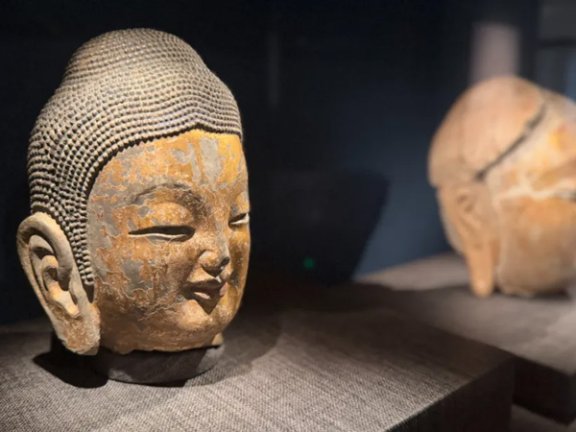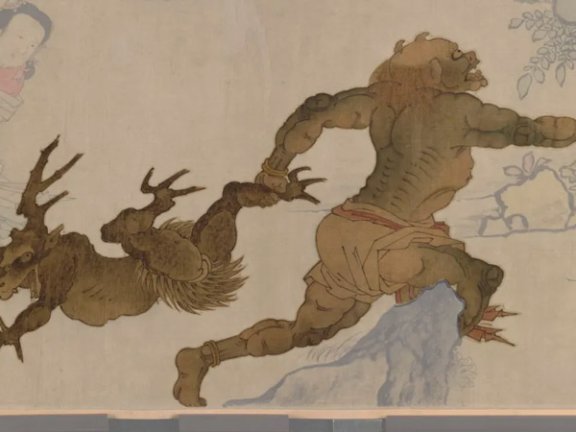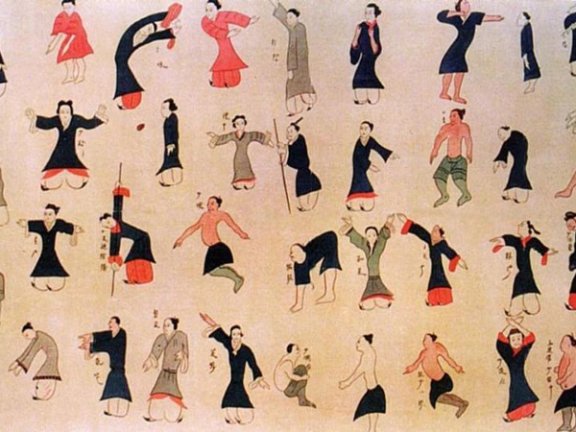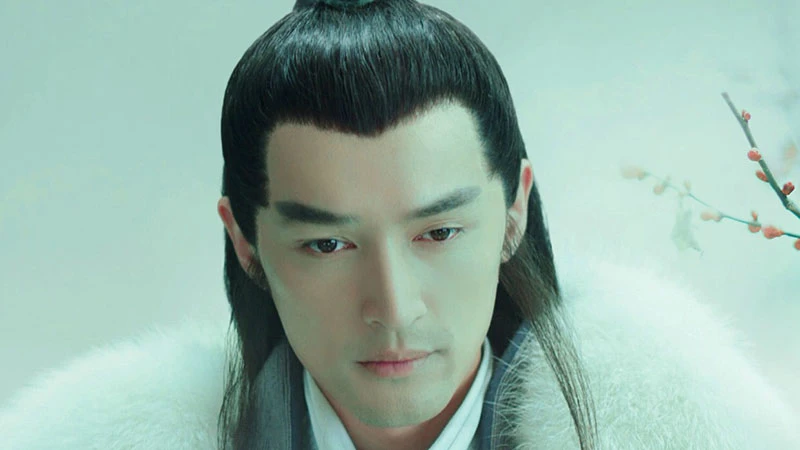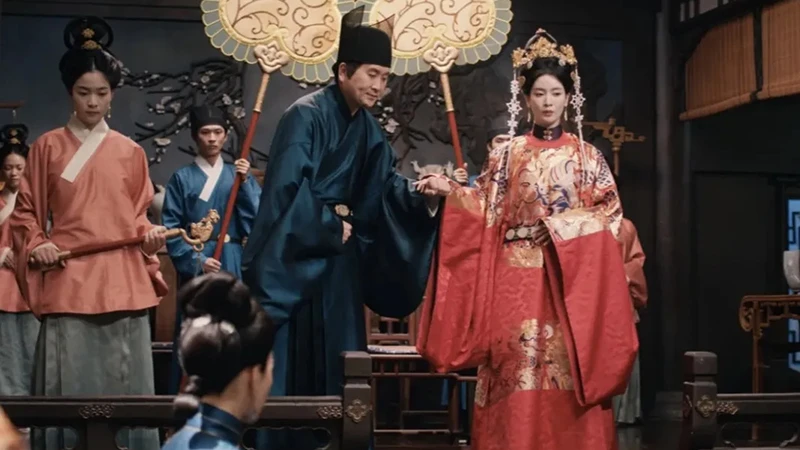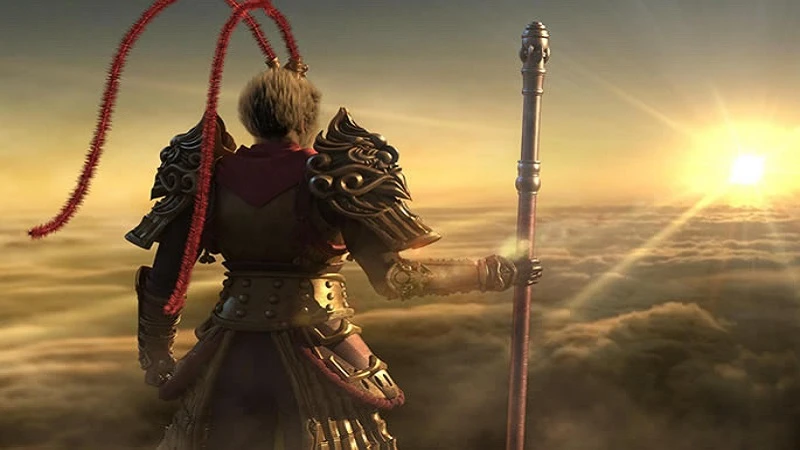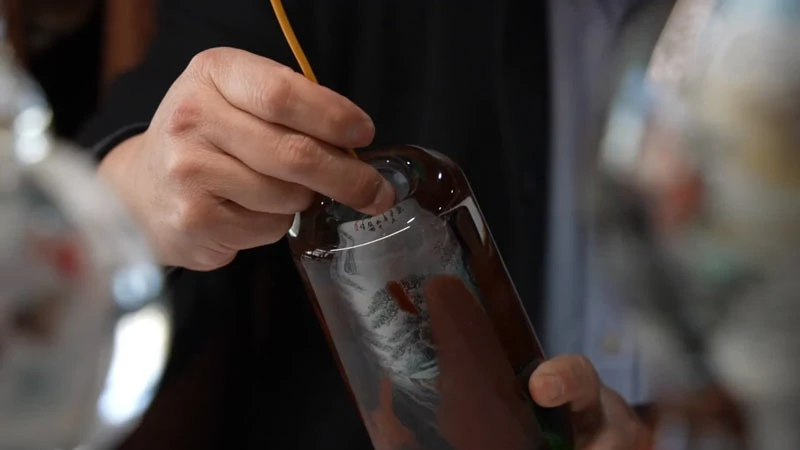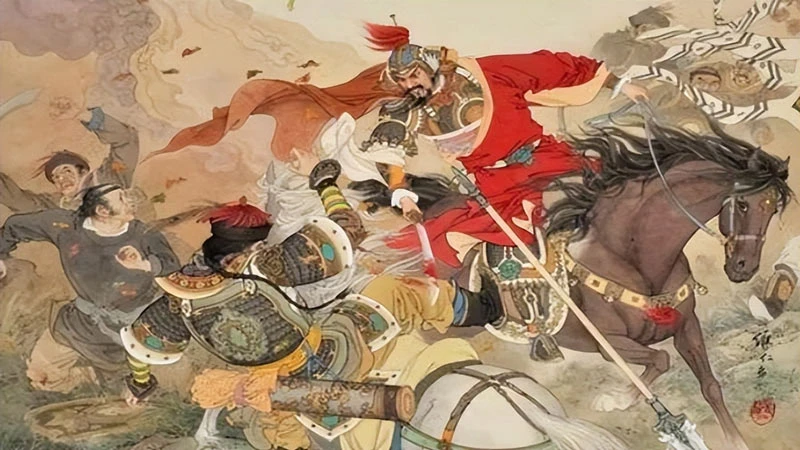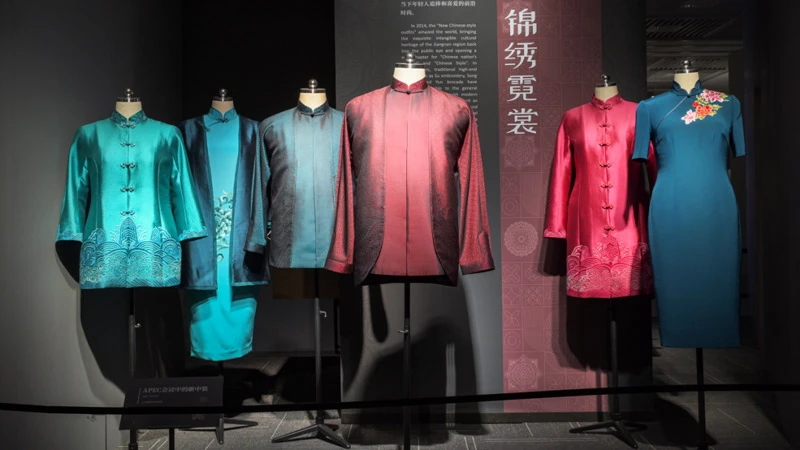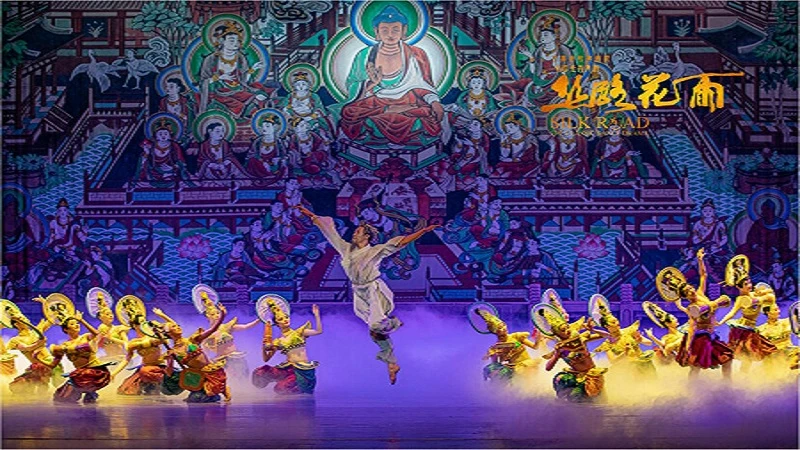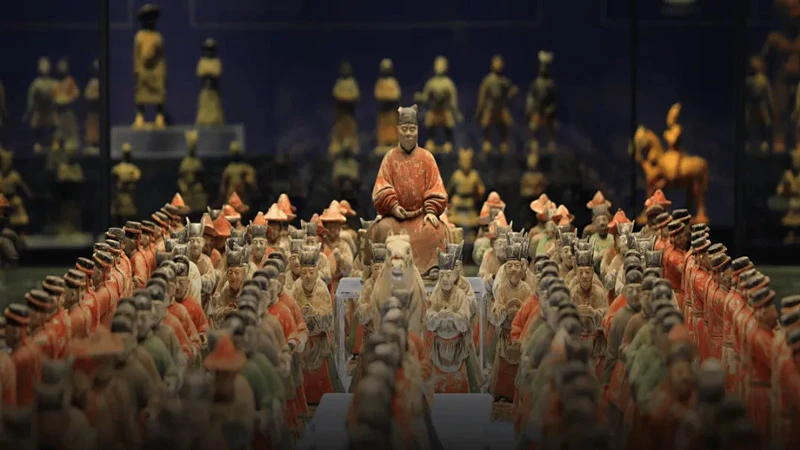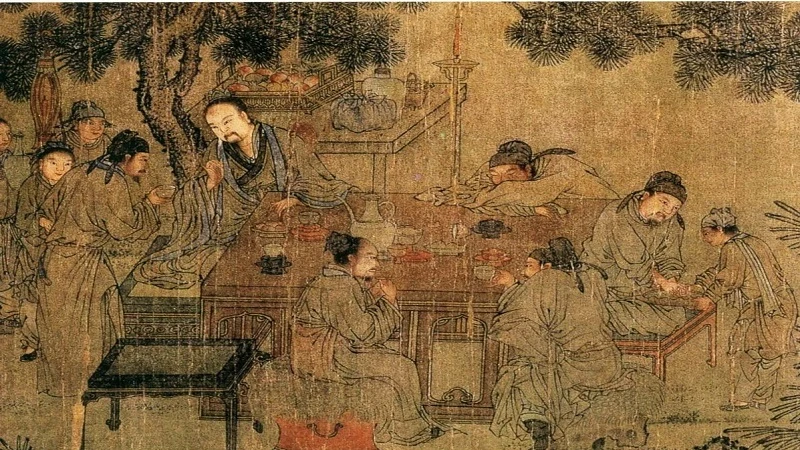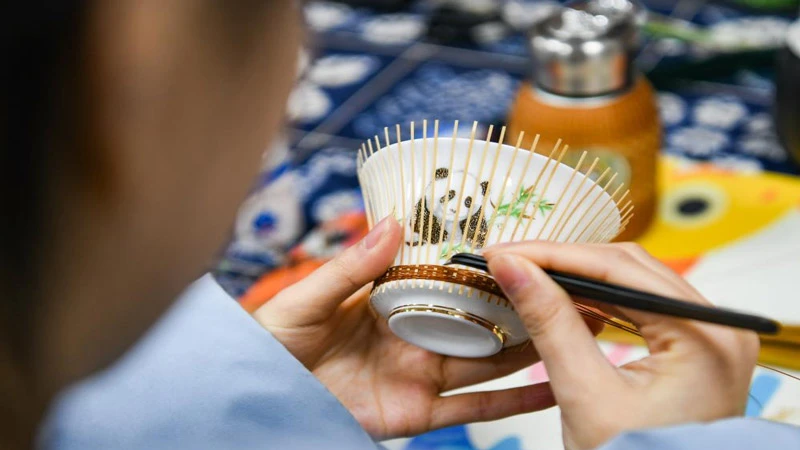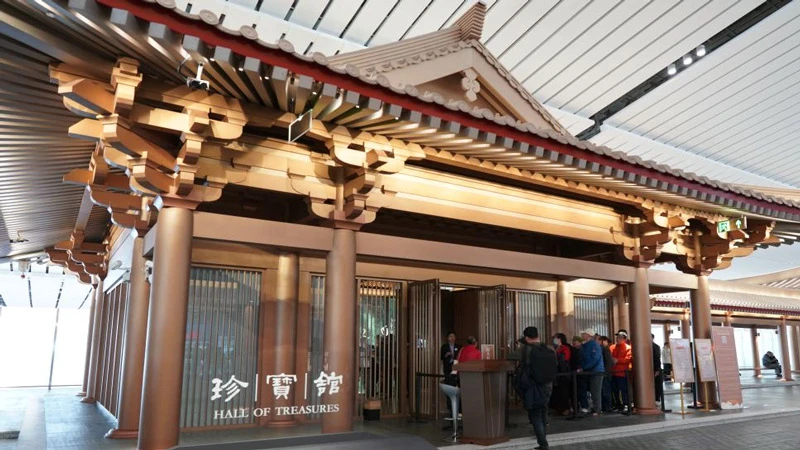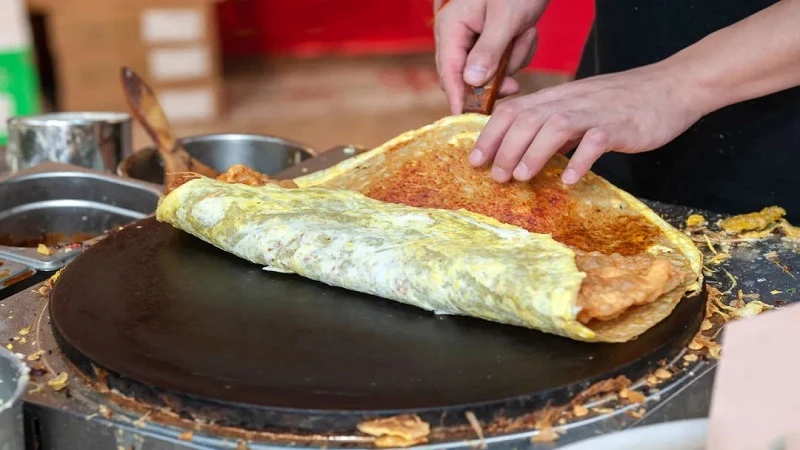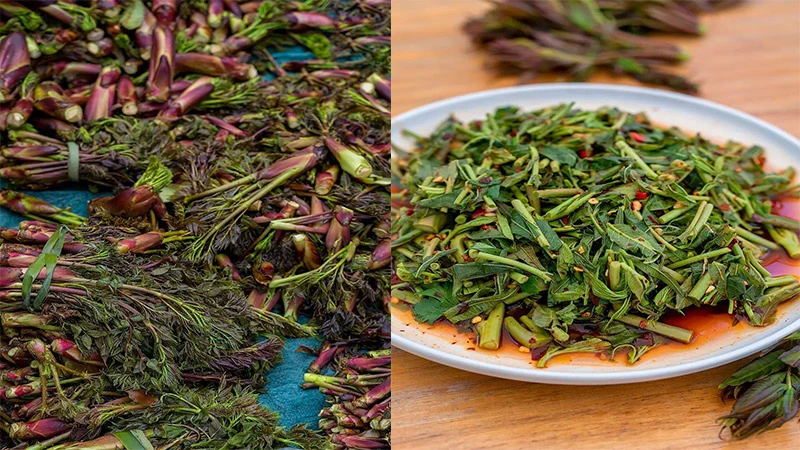-
The Fascinating History of Futou: A Hat Worn by Chinese Men
In many Tang and Song dynasty dramas, you'll notice that almost every male character wears the same type of hat—the Futou. Whether they're high - ranking officials, low - level clerks, or military generals, the Futou is a common sight. This raises the question: was this hat really that ubiquitous in ancient China? The Futou, also known as the 'Zheshang Jin' (折上巾), was the most popular headwear for men during the Tang dynasty. It originated from a simple headscarf and evolved into two main styles: the 'soft wrap' and the 'hard wrap.' The soft wrap involved directly tying the cloth around the head, while the hard wrap used a base called 'Jinzi' (巾子) to create a more structured shape. The design of the Jinzi varied slightly over time. Historical records, such as Shen Kuo's 'Dream Pool Essays' from the Song dynasty, describe the Futou's tying method in detail. It involved four straps: two tied at the back, leaving two dangling, and the other two folded and tied at the top, giving it the nickname 'Zheshang Jin'. This style was particularly popular among military personnel, as noted in the 'Tang Huiyao.' Despite its widespread use, the Futou wasn't universal. Emperors wore… -
Why Tang Dynasty Style Dominates Costume Dramas
In recent years, costume dramas featuring Tang Dynasty aesthetics have surged in popularity. From the widely acclaimed "The Curse of the Pearl Screen" and "Strange Tales of the Tang Dynasty" to upcoming productions like "National Beauty and Fragrance" starring Yang Zi and Li Xian, "Midnight Return" with Tian Xiwei and Xu Kai, Liu Shishi's "Palm of the Hand," and the adaptation of Ma Boyong's novel "Lychees of Chang'an," the Tang Dynasty has become the go - to historical backdrop for filmmakers. The Tang Dynasty (618 - 907 AD) was a golden age of Chinese civilization, renowned for its cultural confidence and sartorial splendor. As historian Sun Ji noted in "Essays on Ancient Chinese Costumes," Tang noblewomen boldly embraced low - cut dresses that accentuated their beauty. The poet Ouyang Xun famously captured this aesthetic with the line: "Snow - white chests and flower - like faces." Shen Congwen's "History of Chinese Clothing" details how Tang women pioneered fashion trends. The popular "half - sleeve" jacket, worn over narrow - sleeved blouses, featured various collar styles and was tied with delicate ribbons across the chest. The pi (披帛), a long decorative scarf often made of sheer silk with intricate patterns, became… -
Did Ancient Chinese Use Umbrellas on Sunny Days?
We all know that ancient Chinese used umbrellas on rainy days, but did they also use them for sun protection on sunny days? In historical dramas, oil-paper umbrellas are no longer just for rain but have become props to create an aesthetic atmosphere. They are often seen in scenes where the protagonist walks slowly under a bright sun with an oil-paper umbrella. While beautiful, these umbrellas are made of paper—can they withstand prolonged exposure to sunlight? The answer is simple: ancient Chinese were clever. While oil-paper umbrellas weren’t practical for sunny days, they had other types of umbrellas specifically designed for sun protection. For example, during the Western Zhou Dynasty, umbrellas made of silk (bo) were used, though their primary purpose wasn’t sun protection but to signify noble status. The Northern Qi Dynasty had strict regulations: kings and high-ranking officials used purple umbrellas with pheasant tail decorations, while lower-ranking officials and scholars used blue umbrellas with green linings. The "Yuxie" records that during the Wei Dynasty, people invented oil-paper umbrellas by splitting bamboo and coating paper with oil for daily convenience. During the Qin and Han Dynasties, elaborate canopies (huagai) became popular. The painted bronze chariot unearthed from the Mausoleum… -
The Fashion Trend of Bird Crowns in Ancient China
In ancient China, a unique fashion trend emerged where women adorned their heads with bird - shaped crowns. This practice, which might seem extravagant today, was quite popular among the nobility and performers during various dynasties. The tradition of wearing bird crowns dates back to the Northern Qi Dynasty, as evidenced by murals in the Xu Xianxiu Tomb. By the Tang Dynasty, these crowns became a favorite among female dancers and attendants. Historical records, such as Tang Du You's 'Tongdian' and the 'New Book of Tang,' document performances where dancers wore bird crowns and colorful costumes to celebrate imperial achievements. Initially used by performers, bird crowns gradually gained popularity among the aristocracy. Crafted from gold and silver and embellished with precious stones, these crowns featured various birds like peacocks, phoenixes, parrots, and mynas. The Dunhuang murals frequently depict these ornate crowns, especially on princesses from Khotan and Uyghur, adorned with jade and dressed in luxurious robes. A notable example is a Tang Dynasty pottery figurine from the Jinxiang County Princess Tomb, wearing a peacock crown with vividly painted feathers. The phoenix crown held a special status, combining features of multiple birds, as described in Zhang Hua's 'Avian Classic.' Phoenix motifs… -
What's Inside Ancient Buddhist Statues Attracted Tomb Raiders
For centuries, tomb raiders have been notorious for targeting Buddhist statues, stupas, and religious sites. But why? The answer lies in an ancient ritual practice known as Zhuang Cang (装藏)—a tradition of concealing sacred objects inside Buddhist statues. These hidden treasures held both religious significance and material value, making them prime targets for looters. Let's explore what's inside these statues and why they became objects of greed. The Hidden Wealth: What's Inside Buddhist Statues? Buddhist statues and temples often contained Zhuang Cang, a ritual practice where sacred objects were sealed inside. These artifacts were believed to enhance the spiritual power of the statue but also held considerable worldly value. Precious Metals & Gemstones The "Five Treasures" (五宝)—gold, silver, pearls, coral, and lapis lazuli—were essential in many Zhuang Cang rituals. Other valuables like crystal, agate, and dzi beads were also commonly used. In ancient times, these materials could be melted down or traded, making them irresistible to tomb raiders. Śarīra (舍利) & Sacred Relics Buddhist relics, including sheli (舍利)—the pearl-like remains found in the ashes of enlightened monks—were considered priceless in religious circles. High-ranking Buddhist statues often contained such relics, attracting looters hoping to sell them on the underground market. Scriptures… -
The Subversive Art of China's Demon-Quelling Masterpieces
Subverting Celestial Authority in Song Dynasty Art In the flickering candlelight of a 12th-century Song Dynasty workshop, an anonymous painter dipped his brush into vermilion pigment to depict a scene that would unsettle imperial censors for centuries. The resulting Soushan Tu (搜山图, Demon-Quelling Scroll), now preserved in the Palace Museum, Beijing, presents a cosmic paradox: heavenly soldiers with bulging eyes and twisted faces hunt down fox spirits wearing scholar robes, while weeping deer-women clutch their half-human infants. This 6-meter-long visual rebellion dismantles the myth of divine benevolence through deliberate symbolic inversion—a coded critique of power that still resonates today. The scroll's genius lies in its grotesque ambiguity. A boar-headed soldier drags a tree spirit by its roots, the latter's branches clawing at the air like skeletal hands. Nearby, a pheasant-winged celestial general raises a spiked mace over a cowering family of rabbit spirits, their human-like faces frozen in terror. These are not the clean moral binaries of temple murals, but a murky world where pursuer and prey mirror each other's monstrosity. The Yuan Dynasty zaju (杂剧, poetic drama) Erlang Shen Zui She Suomo Jing (二郎神醉射锁魔镜, The Drunken Erlang Shen Shoots the Demon-Sealing Mirror) provides textual counterparts to these haunting images.…- 0
- 0
- 19
-
The Living Spirit of Chinese Folk Performance
With the recent announcement of China's sixth batch of national intangible cultural heritage inheritors, Guangdong has become a focal point, with 58 individuals recognized for their dedication to preserving arts like Guangdong Lion Dance (广东醒狮), Cantonese Opera (粤剧), and Chaozhou Opera (潮剧). Among these honorees are practitioners of some of China's most enigmatic folk traditions—Nuó Dance (傩舞), Qilin Dance (麒麟舞), and Panwang Festival (盘王节). Each of these embodies the resilience of Chinese folk culture, preserving both its mystical essence and regional identity. But what cultural significance do they hold? How do their inheritors sustain them in modern times? Let's step into the world of these mesmerizing traditions. Nuó Dance: A Ritual Frozen in Time "Nuó Dance is deeply rooted in our village's traditions. It has been passed down for generations, and everyone, from elders to children, participates with enthusiasm," says Peng Qiusheng, a newly recognized national inheritor from Jiuxian Village (旧县村) in Zhanjiang (湛江). Nuó (傩), an ancient ritual performance, traces its origins back to the Zhou Dynasty (西周). It was initially a shamanistic practice to ward off evil spirits and seek divine blessings for favorable weather and bountiful harvests. Over centuries, it evolved into a dramatic art form encompassing… -
Seasonal Health Tips: Ancient Wisdom for Wellness
When spring arrives, so does that overwhelming drowsiness. Some of us reach for an iced coffee, while others hit the gym to shake off the fatigue. But these modern solutions only offer temporary relief. If we truly want to stay energized, why not take a page from ancient wisdom? From the traditional lifestyle of "rising with the sun and resting at dusk" to the proactive health philosophy of "preventing illness before it arises," our ancestors mastered the art of well-being. Let's explore their secrets through ancient artifacts and uncover seasonal health tips that still applies today. Spring: Wake Up Your Body with Daoyin Exercises The Huangdi Neijing (黄帝内经), an ancient Chinese medical text, states: "In the three months of spring, one should go to bed late and rise early, take walks in the courtyard, and embrace the vitality of the season." This advice highlights the essence of spring wellness—waking up early and engaging in physical activity to rejuvenate the body. Over 2,000 years ago, people already practiced a form of breathing-based exercise known as Daoyin (导引), an early form of qigong. The Daoyin Tu (导引图), an ancient scroll excavated from the Mawangdui (马王堆) Han tombs, depicts 44 figures performing various…- 0
- 0
- 19
-
Oracle Bone Script: The Empire's Big Data Archives
The earliest known mature writing system in China, oracle bone script (Jiaguwen, 甲骨文), emerged during the late Shang Dynasty (商, 14th to 11th centuries B.C.). Carved onto tortoise shells and animal bones, these inscriptions preserve the historical memory and cultural codes of early Chinese civilization. As both the "childhood form" of Chinese characters and a mirror reflecting the Shang and Zhou societies, they offer invaluable insights into ancient governance, religion, technology, and art. Since their rediscovery in 1899, oracle bone inscriptions have opened a 3,000-year-old historical window, embodying the weight of "one word, one history" and serving as a cornerstone for understanding Chinese cultural roots. From Knife to Brush, the Origins of Calligraphy Oracle bone inscriptions were carved using bronze or jade knives, resulting in thin, sharp, and angular strokes that exhibit a unique "knife-carved aesthetic." The characters vary in size and spacing—such as "sacrifice" (Ji, 祭), resembling a symmetrical altar, or "deer" (Lu, 鹿), whose simple curves suggest antlers and hooves. These early inscriptions laid the foundation for later Chinese calligraphy, influencing scripts like Jinwen (金文, Bronze Inscriptions) and Seal Script (徽书, Zhuanshu). Many oracle bone characters retain strong pictographic elements. For example, "mountain" (Shan, 山) depicts three peaks,… -
Crossed the Threshold: Minnan's Vertical-Coffin Tradition
Moonlight filters through the patio, casting a soft glow over the hall of an ancient house. A young boy sleeps beside a red-cloth-covered coffin. This is not the beginning of a horror story—rather, it is a quiet lesson in life and death, embedded in the collective memory of the Minnan (闽南, southern Fujian province) people. Known as Shushou (竖寿, vertical coffin symbolizes longevity), this fading tradition serves as an early form of life education, teaching children to embrace mortality with reverence and acceptance. Life and Death Lessons Under the Moonlight As a child, I often saw coffins standing against the walls of old houses. The sight sent chills down my spine, and I instinctively kept my distance. Only later did I understand that this was the Minnan custom of "Shushou," where families prepare coffins in advance for their elderly members. During high school, I rented a room in a grand but aging house near my school. My room, known as the "big room," was situated to the left of the hall. On sweltering summer nights, when air conditioning and electric fans were still uncommon, I would sleep on a bamboo mat in the hall, cooled by the night air drifting… -
The Cloak: Style vs. Practicality in Historical and Modern Dramas
If there’s one thing historical dramas love, it’s a good cloak. Flowing, dramatic, and effortlessly elegant, the cloak has become a staple in costume design, draping over generals, scholars, and noblewomen alike. But as striking as they look on screen, one can’t help but wonder—do these cloaks actually keep anyone warm? Take Nirvana in Fire (琅琊榜) as an example. The protagonist, Mei Changsu (梅长苏), spends most of his time wrapped in thick fur-lined cloaks, yet somehow, he always looks like he’s one chilly breeze away from freezing solid. Viewers have joked that he must have succumbed to hypothermia long before the series’ dramatic conclusion. So what’s the deal? Are these cloaks truly as impractical as they seem, or is there more to their historical evolution? Cloaks in Costume Design Cloaks have long been favored by costume designers for their cinematic effect. They add movement to a character, create an air of mystery, and make even the most unassuming figure look imposing. In Nirvana in Fire, Mei Changsu’s fur-lined cloaks emphasize his frailty while still giving him an air of quiet authority. But do these garments serve their intended function, or are they just glorified fashion statements? The answer, unfortunately, leans…- 0
- 1
- 23
-
A Glimpse Into The Mangpao in The Glory
The opulent red gown worn by the character of Empress Miao in the historical drama The Glory (雁回时) has left viewers in awe. With its vibrant crimson hue, intricate details, and dramatic silhouette, it conjures up images of Dream of the Red Chamber (红楼梦), especially the scene where the imperial consort visits the imperial court in a ceremonial outfit. Could it be a nod to a regal garment from the Ming Dynasty, the mangpao (蟒袍), a dress that exudes both power and ceremony? The outfit Miao Guifei (苗贵妃) wears in The Glory isn't just any costume—it's an interpretation of the mangpao, a traditional Ming Dynasty ceremonial gown typically worn by high-ranking officials and imperial family members. The gown’s structure is a perfect balance between grandiosity and elegance, characterized by its round collar, long robe length, and the iconic mang (蟒) dragon motif embroidered onto the fabric. The mangpao was often reserved for the most important occasions, worn by figures of the highest stature, such as empresses or consorts. In the case of Miao Guifei, the attire suggests not only her high rank but her formidable presence—no wonder viewers felt like this was more than just a royal entrance; it had…- 0
- 0
- 19
-
Why Wukong Defied Becoming a Divine Mount
In the celestial hierarchy of Journey to the West (西游记), divine mounts (神骑) occupy a paradoxical role: they are both exalted and enslaved. Lions, elephants, and golden-haired beasts—once fearsome demons—are collared, neutered, and pressed into service by bodhisattvas and sages. Their domestication symbolizes Heaven's power to redeem chaos into order. Yet one figure stands apart, unbroken and unbridled: Wukong, the Monkey King. The Anatomy of a Divine Mount Heaven's stables are not filled by chance. To qualify as a mount, a creature must meet strict criteria—criteria Wukong shattered with every swing of his staff. The Biology of Submission Divine mounts are almost exclusively quadrupeds: lions, elephants, oxen, or horses. Their four-legged stance signifies stability, a biological pragmatism for carrying gods across realms. Wukong, however, is a bipedal primate—a mimic of humans who stands upright, wields tools, and laughs at gravity. His very anatomy rebels against the concept of being "ridden." In Chinese symbolism, monkeys represent the restless "heart-mind" (xinyuan), a metaphor for desires that resist control. To mount him would be to tame the untamable, a paradox even the Jade Emperor's bureaucracy couldn't resolve. The Politics of Punishment Divine mounts are not born—they are made. Take the Nine-Headed Lion, a…- 2
- 0
- 42
-
Three Generations Breathing Life into China's Bottled Masterpieces
How a Brush Transforms Glass into Art In the quiet corners of Zibo (淄博) City's Boshan District, Shandong Province, an 81-year-old master named Zhang Guangzhong bends over a worktable, his hands steady as he guides a hair-thin brush through the narrow mouth of a snuff bottle. Inside this "bean-sized" aperture, mythical beasts gallop across miniature landscapes, and 500 arhats (Buddhist saints) gather in silent contemplation—all painted in reverse. This is the elusive craft of Lupai Neihua (鲁派内画), or Shandong-style inner-bottle painting, a national intangible cultural heritage that turns humble glass vessels into portals to China's artistic soul. For Zhang, this ritual is more than a vocation—it's a lifelong meditation. Since 1964, when he joined Boshan Art Glass Factory's inner-bottle painting division, he has spent over 60 years refining his technique under masters like Zhang Wentang and Xue Jingwan. Unlike Western miniature painters who work on flat surfaces, Lupai artists must visualize their compositions backward, their brushstrokes defying gravity as they paint on the inner walls of bottles. The tools themselves are marvels: custom-made brushes with curved bamboo handles and resilient weasel-hair bristles, designed to navigate the glass labyrinth. Zhang's works, such as Hundred Beasts and Five Hundred Arhats, are celebrated…- 1
- 0
- 28
-
Reincarnating Ancient Herotic Valors in New Era
What Makes a Hero? Heroes, as the Chinese saying goes, are "the unyielding spine that never bends with time"—a force that courses through the blood of mountains and rivers, igniting generations with its fervor. This eternal inquiry lies at the heart of Qin Yin (琴吟), a hauntingly powerful ballad released in March 2024 as part of a collaborative project by China National Radio and NetEase Cloud Music. More than a song, it is a bridge spanning millennia, weaving the valor of Jin Dynasty (晋朝) generals Zu Ti (祖逖) and Liu Kun (刘琨) into a modern anthem that asks: How does heroism shape a civilization's soul? Set against the backdrop of China's Spring Equinox—a time of renewal—Qin Yin emerges as both a tribute and a challenge. Its lyrics, penned like ink brushed onto silk, retrace the footsteps of two fourth-century warriors whose camaraderie and sacrifice became legend. Through ethereal zither melodies and thunderous orchestral swells, the song distills their spirit into a single refrain: "Let the zither's notes be our ink; together, we'll paint the rivers and mountains of Huaxia." But why resurrect these figures now? In an era of fleeting digital trends, Qin Yin dares to anchor itself in China's…- 1
- 0
- 28
-
How Jiangnan Embroidery Stole the Show at APEC
When world leaders stepped onto the global stage at the 2014 APEC Summit in Beijing, their attire transcended mere diplomatic protocol. The "New Chinese Attire" (新中装) became an instant cultural phenomenon—a sartorial manifesto that bridged millennia of craftsmanship with 21st-century innovation. This meticulously curated wardrobe did more than clothe dignitaries; it reintroduced the world to Jiangnan's textile heritage while sparking a "Guofeng" (国风) revival that continues to shape China's contemporary fashion identity. Today, as traditional techniques like Su embroidery (苏绣) and Song brocade (宋锦) find fresh relevance in streetwear and haute couture, the South China Museum's exhibition Splendid Jiangnan: The Golden Age of Chinese Textile Art (锦绣江南——中国传统织绣工艺的巅峰创造) revisits this pivotal moment, unpacking how six iconic APEC ensembles became catalysts for cultural reinvention. From Imperial Workshops to Global Runways The Yangtze River Delta's Jiangnan (江南) region, long celebrated as the cradle of Chinese textile excellence, has cultivated textile arts for over 2,000 years. During the Ming and Qing dynasties, Suzhou's embroidery ateliers and Nanjing's brocade looms supplied the imperial court with fabrics so exquisite they were deemed "cloth woven by clouds." Yet by the late 20th century, many of these crafts faced extinction, preserved only in museum archives or practiced by… -
Echoes of Dunhuang: Dance Drama Silk Road Flower Rain
In the words of a 9th-century Dunhuang scribe: "The winds of the Silk Road may fade, but the dance of the mural endures." Let Silk Road’s timeless tales stroke you like the Flower Rain. A Dance That Transcends Time When the curtain rises on Silk Road Flower Rain (丝路花雨), audiences are not merely watching a performance—they are stepping into history. For 45 years, this groundbreaking dance drama has enchanted the world, weaving together the artistry of Dunhuang's (敦煌) murals, the spirit of the Silk Road, and the universal language of human connection. As it prepares to grace the stage of Guangzhou's Friendship Theatre on April 18–19, 2024, the production reaffirms its status as a cultural titan, one that breathes life into ancient tales. Since its 1979 debut in Lanzhou, Silk Road Flower Rain has transcended borders, performing over 4,000 times across 40 countries, from the grand theaters of Paris to the historic stages of Kyoto. Its accolades—"the living Dunhuang murals (敦煌壁画)," "China's answer to Swan Lake"—speak to its unparalleled fusion of myth, movement, and music. At its heart lies a story as old as the Silk Road itself: the bond between a Dunhuang painter, Shen Bi Zhang (神笔张); his daughter…- 0
- 0
- 33
-
Danxia: China's Colorful Geological Masterpiece
What Exactly is Danxia? When you think of China's stunning landscapes, what comes to mind? The towering mountains of the Himalayas? The serene waters of West Lake? What many people overlook, though, are the Danxia landforms, a truly unique geological wonder that has been shaping the earth for millions of years. But first, what exactly is Danxia (丹霞)? This term, entirely coined by Chinese scholars, refers to a specific type of landform made from red sandstone and gravel, eroded by both wind and water. The result? Vibrant cliffs, rock towers, and unique formations, often painted in hues of red, orange, and purple, as if the landscape itself is alive and pulsing with color. Danxia is vast and diverse geological history. If you want to see nature's most extraordinary geological structures, China's Danxia areas should be at the top of your list. Why China's Danxia is So Special Danxia isn't just another natural wonder—it is, in fact, a landmark of Chinese heritage. The name itself comes from the ancient poet Cao Pi's line, "Danxia jiá míng yuè" (丹霞夹明月), where the brilliance of the red mountains is paired with the brightness of the moon. Over the centuries, the term has come to…- 0
- 0
- 25
-
A Journey Through China's Top 10 Museums
China, a land of timeless grandeur, boasts a history stretching over 5,000 years. Its legacy is preserved in the country's greatest museums—places where jade burial suits whisper secrets of the afterlife, where ink scrolls unfold poetic landscapes, and where terracotta soldiers stand in silent formation, guarding their emperor in eternity. Whether you are an enthusiast of ancient warfare, an admirer of fine porcelain, or a lover of intricate calligraphy, these institutions offer an immersive experience. Let us embark on a journey through China's most fascinating collections—each artifact a window into an unparalleled past. The Palace Museum 故宫博物院 Standing at the heart of Beijing, the Forbidden City—also known as the Palace Museum—was home to 24 emperors of the Ming and Qing dynasties. Beyond its red walls lies a breathtaking collection of 1.86 million artifacts, ranging from imperial robes and jade carvings to ceremonial bronzes and priceless calligraphy. This museum is not only a testament to China's imperial power but also a masterpiece of architectural symmetry and philosophy. Every piece within its walls speaks to the imperial vision of grandiosity, the wisdom of rulers who believed their mandate came from the heavens, and the delicate relationship between life, death, and legacy. Highlights…- 0
- 0
- 34
-
The Aesthetic of Symbolic Food in the Song Dynasty
If one could time-travel back to the bustling streets of the Song Dynasty, the most astonishing sight might not be the vibrant marketplaces or the lively entertainment districts, but rather the mesmerizing artistry found in everyday food. Vendors pushed wooden carts filled with lifelike fruit confections), crafting stunning edible illusions. Among these, the smiling face snacks stood out—honey-glazed plum slices carved into smiling female faces, with dried peaches as blushing cheeks and almonds as delicate teeth. These delicate creations often prompted literati to pause and compose verses, likening the treats to well-crafted smiles. At the grand feasts of the capital's famed establishments, culinary creativity reached new heights. The spectacle of pavilion desserts amazed onlookers: dough tinted with locust flower juice formed gray-tiled roofs, malt sugar spun into intricate railings, and date paste molded into miniature rock formations. Green bean jelly shimmered like a pond's surface, while delicate layers of green bean powder mimicked mossy textures. These microcosmic landscapes were not only admired but also eaten with ceremony—at one banquet, guests were instructed to first drink three cups of wine before disassembling the meandering stream pavilion by consuming its sugar pillars. Poetic Bites: Where Literature Meets Cuisine The rise of symbolic…- 0
- 0
- 39
-
Sichuan's Ancient Crafts Update with Pandas, Bamboo and Porcelain
The Art of Tea Reimagined In the misty foothills of China's Sichuan province, a father-daughter duo is rewriting the rules of cultural preservation—one bamboo-wrapped teacup at a time. At Chongzhou's Intangible Cultural Heritage Park, a groundbreaking fusion of Daoming bamboo weaving (a 1,200-year-old craft) and Dehua porcelain (from Fujian's "China White" ceramic tradition) has birthed the viral "Panda Embracing Bamboo" tea set . Bai Jingbo, 52, the mastermind behind the design, explains: "The challenge was to make a 1,200-year-old tea ritual resonate with Gen-Z." His solution? A porcelain core fired at 1,320°C, sheathed in bamboo strips from 2-3-year-old ci bamboos—chosen for their flexibility and 120MPa tensile strength . Each cup undergoes 32 precise weaving steps, transforming rigid bamboo into undulating "water ripple" patterns that cradle the porcelain like a second skin. The pièce de résistance is the panda motif: traditional ink-wash paintings of pandas clutching bamboo stalks are kiln-fired onto the porcelain, creating a dialogue between Sichuan's ecological identity and its craft heritage . Three Generations, One Vision This project thrives on a cross-generational alliance: - Yang Yong, 68, a Chongzhou shadow puppet master, sketches initial panda designs using centuries-old ink techniques . - Bai Jingbo translates these into ceramic… -
Discover Ancient China at the World's First In-Terminal Museum
Xi'an Xianyang International Airport has redefined layovers with a groundbreaking attraction: the Western Airport Museum, the world's first in-terminal archaeological exhibition. Opened on February 26, 2024, this innovative space blends modern air travel with China's ancient heritage, offering a time-traveling journey for history buffs and curious globetrotters alike. Whether you're transiting through Xi'an or starting your Silk Road adventure, here's why this museum deserves a spot on your itinerary. A Gateway to China's Glorious Past Located within the newly operational T5 Terminal, the Western Airport Museum turns wait time into wonder. Its permanent exhibition, "Chang'an·Everlasting Peace: Relics from Xi'an Airport and the Legacy of Ancient Chang'an", showcases artifacts unearthed during the airport's construction. These relics, spanning millennia, narrate Xi'an's role as the eastern terminus of the Silk Road and the heart of the Tang Dynasty (618–907 CE), when Chang'an (modern-day Xi'an) was the world's largest cosmopolitan city. Highlights include: Silk Road Trade Relics: Exquisite Tang-era pottery, foreign coins, and glassware revealing cross-cultural exchanges. Interactive Displays: Holographic projections recreate bustling Tang marketplaces and caravan routes. Airport Archaeology: Rare photos and tools used in rescue excavations during T5's development, emphasizing how infrastructure projects preserve history. For travelers en route to the Terracotta…- 1
- 0
- 38
-
Culinary Crossroads: From Pineapple Pizza to Candy Dumplings
In the labyrinthine alleys of Tianjin, a traveler's innocent request for lettuce in their Jianbing guozi (Chinese crepe) might elicit a side-eye from the vendor. In Rome, a photo of Hawaiian pizza could send an Italian chef into a theatrical meltdown. And in Guizhou, a bowl of Zhe'ergen (fishy-smelling herb) tossed with strawberries might make locals recoil in horror. Welcome to the deliciously contentious world of food purism—a global phenomenon where culinary traditions are guarded like sacred texts, and even the slightest deviation can spark international outrage. Food, it turns out, is more than sustenance—it's a battleground for cultural identity. Recently, a fiery exchange between Italian and Chinese netizens went viral, with an Italian woman named Maria clapping back at Chinese commenters who trolled her with images of broken spaghetti and pineapple-topped pizza. Instead of crumbling, Maria retaliated with photos of candy-stuffed dumplings and zhe'ergen-strawberry salads, leaving Chinese foodies equally scandalized. This culinary "mutual assured destruction" revealed a universal truth: Every culture has its gastronomic red lines. For travelers, navigating these unspoken rules can feel like walking through a culinary minefield. But understanding the why behind the drama—why a lettuce leaf in a crepe is heresy, or why pineapple on…- 0
- 0
- 27
-
A Chinese Spring Journey Through Budding Delicacies
As spring returns to the earth, a culinary revolution sprouts across China—one that turns thorny shoots, toxic buds, and even tree bark into poetic feasts. Join us on a journey where every bite whispers ancient legends and defies modern logic. Nature's Daredevils: Eating Buds Becomes an Extreme Sport In the misty highlands of Guizhou, spring arrives with a dare. Here, villagers forage for the tender shoots of Heshouwu (Polygonum multiflorum), a plant so toxic its roots are used in traditional rat poison. Yet, between late March and early April, its emerald-green buds become a coveted delicacy. "Timing is everything," explains Chef Yang, stirring a bowl of blanched Heshouwu buds at a rustic farmhouse near Puan County. "Pluck them too early, and they're bitter. Too late, and the toxins intensify." Served with chili oil and crushed garlic, the buds carry a crisp, herbaceous tang—a flavor locals describe as "nature's adrenaline rush." This dangerous dance with botany isn't reckless; it's a testament to ancestral wisdom passed down through generations. Meanwhile, in Shaanxi, diners flirt with another perilous pleasure: pagoda tree buds. While its fragrant white flowers are harmless, the tree's young leaves contain alkaloids that can cause dizziness if consumed raw. Undeterred,…- 0
- 0
- 38




